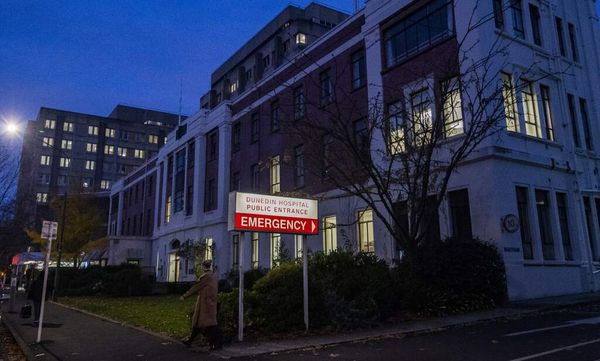
The final version of Labour’s plan to fix the much-maligned RMA has been unveiled - but while ministers argue the changes are a dramatic improvement, hopes of cross-party consensus are already out the window and others say pieces of the planning puzzle still need to be filled in
“Cheaper, faster, better.”
The Government seems to have taken inspiration from French music duo Daft Punk as it sells the public on its changes to the Resource Management Act, arguably one of the most hated pieces of legislation in the country.
After years (if not decades) of stinging criticisms and failed attempts at reform, Deputy Prime Minister Grant Robertson and Environment Minister David Parker on Tuesday revealed the final shape of two of the three pieces of law which will, all going to plan, supplant the RMA.
“For too long, this has been put in the too-hard basket – that is not good enough if New Zealand wants to grow sustainably into the future,” Robertson said of the need for reform.
The Natural and Built Environment Act will be the RMA’s primary replacement, setting out the rules for land use and environmental regulation.
Under a new national planning framework, which will incorporate current rules on issues like urban development and freshwater management, a current mishmash of more than 100 district and regional council plans will be replaced by one natural and built environment plan for each of the country’s 15 regions.
The idea is that with stronger structures in place, resource consents can be both standardised and required only for activities with the highest levels of uncertainty and risk.
The Spatial Planning Act is another piece of the jigsaw, requiring the development of regional spatial strategies looking out at least 30 years into the future at how land might be used.
Parker said the Government expected economic and environmental benefits of between $2.58 and $4.90 for every dollar which was spent on the changes. Future infrastructure projects and subdivision developments would become easier, while the environment would also benefit through the creation of specific limits and targets for specific environmental indicators.
Full co-governance sidestepped
Another goal of the reforms is improving the voice given to Māori, who had not been given sufficient financial support in planning processes or representation in the system.
The RMA’s current requirement for the Treaty of Waitangi’s principles be “taken into account” will be replaced by stronger wording mandating decision makers to “give effect to” its principles.
A new national Māori entity will also be created to monitor whether regional authorities and central government are meeting their Treaty obligations and to provide input for the national planning framework, with the specifics yet to be determined.
However, the Government has stopped short of implementing a co-governance model similar to that seen in its Three Waters reforms. Instead, the regional planning committees tasked with developing planning and spatial strategies must have a minimum of two Māori members out of at least six representatives.
Parker denied the mixed public response to the co-governance aspects of the Three Waters reforms was behind the decision - but it’s hard to imagine it didn’t play some role, given the way those plans have become a millstone around the Government’s neck.
There is optimism, albeit of a cautious nature, about what the changes will mean.
Environmental Defence Society chief executive Gary Taylor told Newsroom the changes could both improve environmental outcomes and give greater certainty to developers.
“If it works in practice as it’s intended to in theory ... it should result in the tide being turned: the 4000 indigenous species threatened at risk or extinction, we should see that number come down over a generation or so, and I would hope we should see more swimmable streams and rivers over time as well.”
Hauraki Mayor Toby Adams, who co-chaired the local government steering group which advised the Government on the RMA reforms, told Newsroom councils played a critical role in the current planning system and would continue to do so under the new model.
“I’m just excited about how the new role is going to make it a lot easier for us as councils to encourage developers and industry to want to do work in our areas, and also protect the environment with a faster, smoother, easier process than the current clunky one we've got.”
'Sharpening up' needed
The Employers and Manufacturers Association also offered support, with head of advocacy and strategy Alan McDonald praising a change to the original draft to give businesses a greater voice in the spatial planning process.
However, there is a sense that important parts of the puzzle still need to be filled in.
Taylor said there was a need for “some sharpening up” of the environmental bottom lines, while McDonald said the success or failure of the reforms would depend on how they were made a reality - a point echoed by Property Council New Zealand chief executive Leonie Freeman.
“Without context and the input of those who actively use the system on a daily basis, it is very difficult to foresee how the proposed acts might work cohesively together,” Freeman said.
Then there is the vexed issue of whether local councils are up to the task of successfully overseeing the transition to a new system, given some blame them for poor implementation of the existing regime.
Asked what the weakest link in the reforms might be, Parker identified culture change within planning departments as one of his greatest concerns.
“We’ve got work underway to enable that, but we’ve got to have a more enabling viewpoint in respect to necessary development, and a more protective viewpoint in respect of accumulative effects.”
How local councils fund and finance new infrastructure was also a major issue, Infrastructure Commission chief executive Ross Copland told Newsroom, emphasising the need for continued work on new projects even as the planning changes took place.
Speaking about the reforms, Parker made a point of emphasising cross-party support for repealing and replacing the RMA.
That remains true, but any hope Labour’s particular vision would win universal approval was swiftly dashed.
“This is a once in 30-year opportunity to have your say about our future resource allocation and planning system, and that's no small thing - we've fought really hard to get this planning system reviewed, and I think we need to carry on and make sure we do a really good job of it." - Ross Copland, Infrastructure Commission chief executive
National Party housing and infrastructure spokesman Chris Bishop told media the party would carefully consider the bills as they went through the select committee process, but believed the reforms would simply add additional layers of bureaucracy without speeding up the planning process.
“We are deeply sceptical it will reduce compliance costs, reduce bureaucracy and make it easier to get infrastructure in houses, and we are deeply sceptical whether it will actually work.”
ACT leader David Seymour also came out against the changes, saying the “vaguely defined principles” in the legislation would do little to improve the status quo.
Even the Greens have found fault with the plans, albeit from a different angle, with environment spokeswoman Eugenie Sage saying the Government had “bought into the outdated idea that there is a trade-off between quality infrastructure and good environmental outcomes”.
Robertson indicated the Government would press on regardless, and with Labour holding an outright majority in Parliament only a major public outcry will stop the reforms becoming law before the next election.
With a six-month select committee process to follow, changes could yet be made, and Copland said it was critical for Kiwis to get involved in the process.
“This is a once in 30-year opportunity to have your say about our future resource allocation and planning system, and that's no small thing - we've fought really hard to get this planning system reviewed, and I think we need to carry on and make sure we do a really good job of it.
“There's too much at stake to not get it right.”










